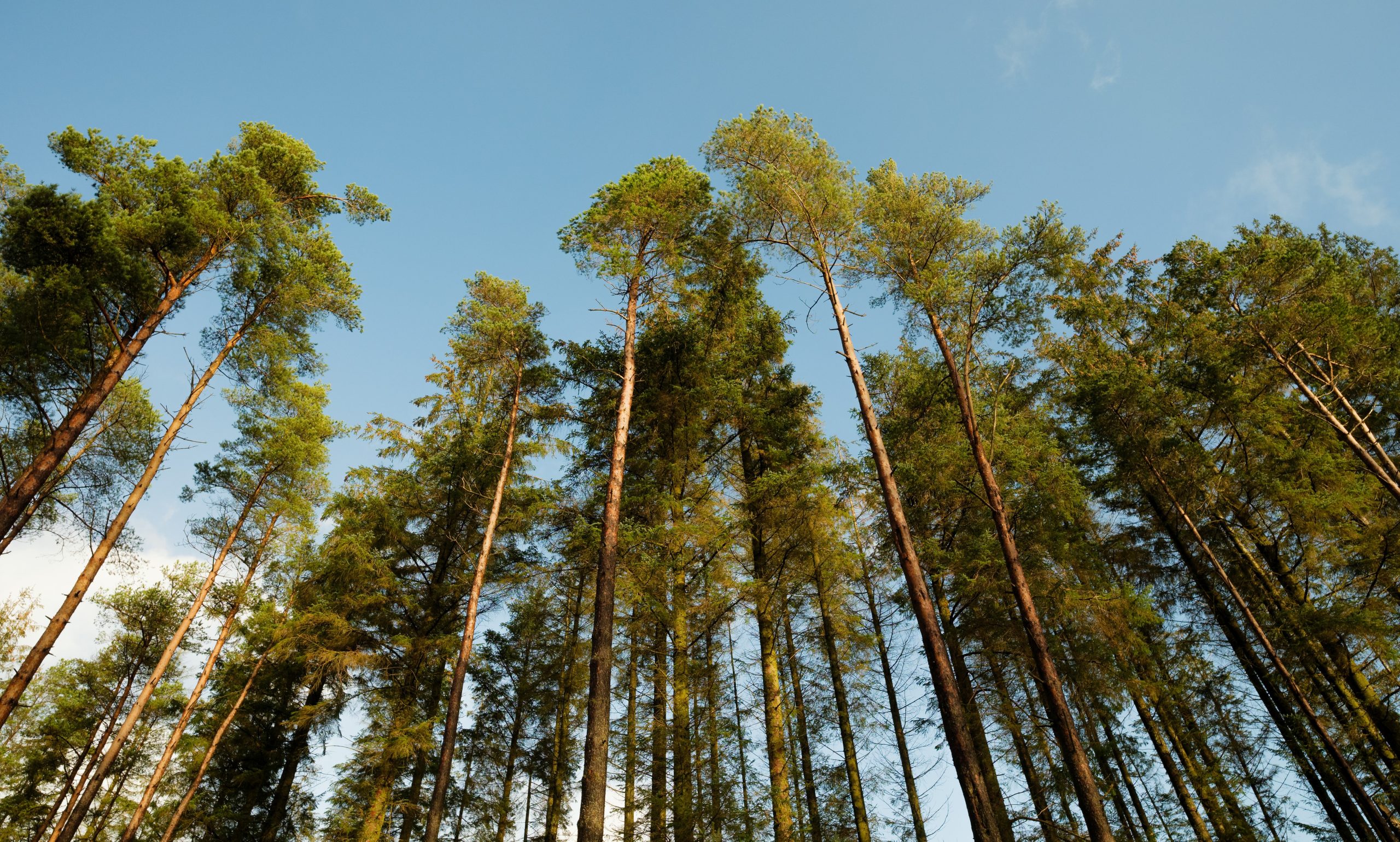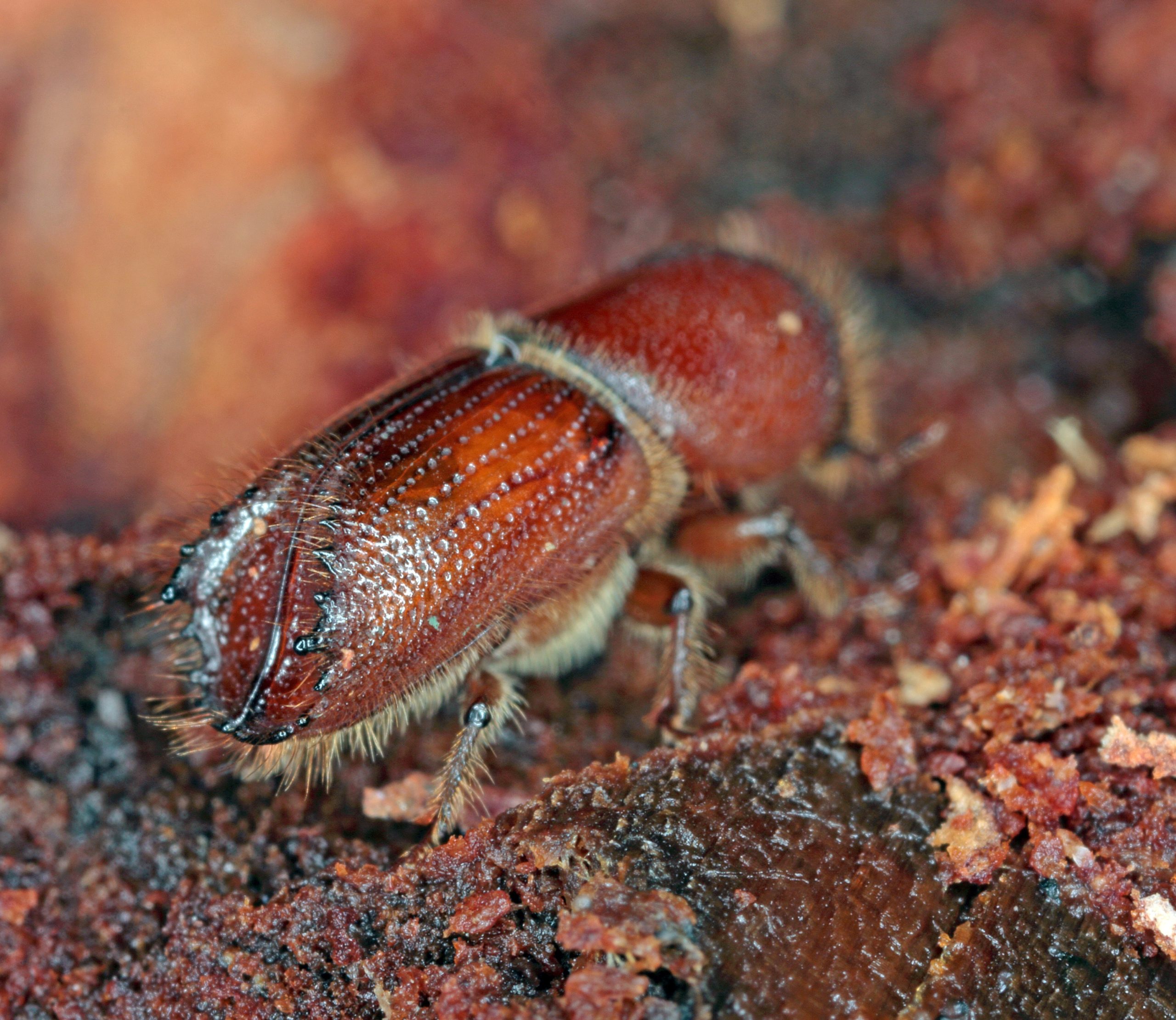New government warning: Ips typographus spotted on tree species for the first time
1 August 2024
The Forestry Commission announced on 25 July 2024 that Ips typographus (eight-toothed spruce bark beetle) has been found on Sitka spruce trees in the South East of England. This is the first sighting of the tree pest on Sitka spruce trees in the UK.
This is following the warning issued in June when Ips typographus was found on Norway spruce.
Ips typographus spotted on Sitka spruce trees
In West Sussex, within the existing demarcated zone, Ips typographus have been sighted on Sitka spruce. The pest was found on cut and fallen Sitka spruce that was in close proximity to infected Norway spruce, indicating that the beetle traversed the short distance to feed on the Sitka spruce. This finding was not unexpected and the pest has currently not been observed on any healthy, living Sitka spruce.

As Sitka spruce makes up 54% of England’s conifer planting, it is vital that the outbreak of Ips typographus is contained and the pest isn’t able to infect any further trees.
As Sitka spruce makes up 54% of England’s conifer planting, it is vital that the outbreak of Ips typographus is contained and the pest isn’t able to infect any further trees.
Further, as Sitka spruce is not commonly planted across continental Europe, its susceptibility to Ips typographus is unclear. It is crucial that outbreaks are contained and you remain vigilant, reporting any sightings and taking the appropriate actions to reduce the likelihood of the pest spreading.
An ongoing long-term study, now entering its sixth year, has been studying the impact that Ips typographus can have on healthy Sitka spruce in comparison to weakened Sitka spruce. This is to better understand the species’ defensive capabilities and the appropriate measures that can be taken to prevent outbreaks.
Due to this recent finding, the Forestry Commission are encouraging landowners to act proactively, removing any Sitka spruce and replanting non-susceptible species. This will prevent further outbreak and reduces the possibility of unknown outcomes stemming from Ips typographus spread on increased numbers of Sitka spruce.
What caused the outbreak?
Ips typographus is believed to have been found on Sitka spruce due to the cut and fallen trees being located close to Norway spruce that was confirmed to have been infected.

The outbreak of the beetle in the UK is likely due to dispersal from mainland Europe, with the pest travelling upwards of 160 km and crossing the Channel to land in the UK, settling in East Anglia. This was made possible by the weather conditions and is believed to be the first instance of the beetle making this journey. Read the full study here.
The outbreak of the beetle in the UK is likely due to dispersal from mainland Europe, with the pest travelling upwards of 160 km and crossing the Channel to land in the UK, settling in East Anglia. This was made possible by the weather conditions and is believed to be the first instance of the beetle making this journey. Read the full study here.
Actions you should take
Government guidance found in the revised Notice (2024) that comes into effect midday 12 June 2024 deems the following material originating within the demarcated area as relevant susceptible material:
“ (i) any wood of the genius Picea A. Dietr., other than in the form of wood packaging material or dunnage, which –
(a) retains all or part of its bark; or
(b) is in the form of chips, waste wood, logs, billets, twigs, faggots or is in other similar forms;
(ii) any isolated bark of the genus Picea A. Dietr.;
(iii) any trees of the genus Picea A. Dietr., over three metres in height including felled or fallen trees, other than fruit, seeds, leaves or foliage.”
If you are within the demarcated area you must take care when handling any form of this susceptible material. As per the revised Notice, if you are in the demarcated area, you must not:
- Fell any susceptible material without prior notification to the Forestry Commission.
- Kill any trees of the genus Picea Dietr. (either by ring-barking, chemical injection or application, mechanical means, biological control, or arboricultural intervention) over three metres tall without prior notification to the Forestry Commission.
- Leave any susceptible material that has arisen from felling in situ without prior authorisation.
- Move any susceptible material (out of or within the demarcated area) without prior authorisation.
If you have any weakened trees, such as those damaged by storms, they must be removed, preferably by chipping or burning. If this is not possible, the damaged trees can be sawn, put into a pile, and covered with a tarpaulin. This tarpaulin must have the edges tucked in and be considerably weighed down to ensure the rotting process can occur more quickly. Damaged trees require authorisation to be removed and transported; email [email protected] for further information and to request a movement authorisation inspection.
Even if you are not within the newly expanded demarcated area, you should stay vigilant for signs of Ips typographus, ensuring any damaged or weakened trees are appropriately removed. The Ips typographus enter flight season as temperatures rise and will be exiting hibernation, seeking recently felled spruce trees.
Rapid eradication measures are in place and working. Woodland owners, landowners, and the wider forestry industry are encouraged to stay vigilant and report any sightings.
Useful links
- Government issues warning: remove storm damaged trees due to Ips typographus threat (Woodsure)
- Eight-toothed spruce bark beetle (Ips typographus) guidance (GOV.UK)
- New action to protect against impacts of bark beetle tree pest (GOV.UK)
- Revised Notice (2024) (GOV.UK)
- Eight-toothed spruce bark beetle (Ips typographus) (Northern Ireland Department of Agriculture, Environment and Rural Affairs)
- Forestry Commission biosecurity learning courses (Forestry Commission)
- How biosecurity can prevent the introduction and spread of tree pests and diseases (GOV.UK)
- A guide for landowners and managers – eight-toothed spruce bark beetle (Ips typographus) (Forestry Commission)
Keep up to date on the latest Woodsure updates through our news pages or follow us on social.
Related news

The Western Forest – 20 million trees to be planted, creating a new national forest

Defra report highlights the importance accessible air quality information

Dorset company prosecuted for illegal felling in a protected woodland
